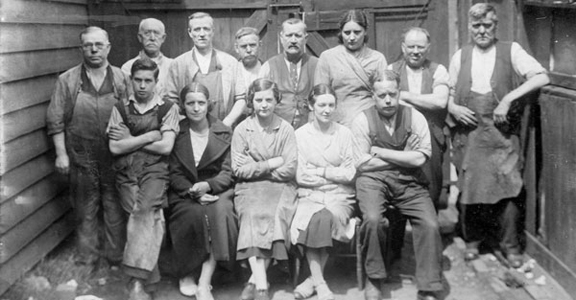We’re pleased to welcome Heidi McIntosh from Wolverhampton Archives and Local Studies to the WV11 writing team!
Heidi will be contributing to the website fairly regularly and giving us an insight into Wednesfield’s rich heritage.
If there’s a specific aspect of Wednesfield’s past you’d like Heidi to concentrate on let us know and make sure you check out the Archives Facebook page for more info.
————–
Following the recent planning application for the last remaining trapmaking premises in Wednesfield, here is a bit of background to the industry. Google “trapmaking†and the highest results that come up are something to do with Dungeons and Dragons. I’m no expert, but I assume it’s very different to the historic industry in which Wednesfield had a virtual monopoly!
The traps made in Wednesfield were mainly for the killing or arresting of animals. The international market for traps rose because of the commercial demand for animal furs, so traps to capture larger animals such as lions and grizzly bears were manufactured. Mantraps were also produced, to discourage poachers on the estates of the landed gentry.
Most trapmakers in Wednesfield were small concerns, employing up to ten men and boys. A notable exception was the Marshall family, based in March End. John Marshall was first registered in 1876, with premises in Wednesfield High Street. From 1892, John Marshall traded as S. Griffiths & Sons, based at the Albion Works, Bloxwich Road. Their trade marks were a lion and a Scotsman. Henry Lane was another of the larger firms, established in 1844 and based at the Eagle Works, Hickman Street (their employees are depicted in the photograph). Their international acclaim led to them winning prizes at exhibitions in Belgium in 1863, Melbourne in 1888 and Brussels in 1897. When the premises of “the old-established trap manufacturing business†Thomas Beech Ltd was sold in August 1945, the land, premises and adjoining houses at 2 and 4 Cross Street had a total area of 990 square yards, with “ample room to expand if requiredâ€.
In 1860, there were 16 trapmakers listed in the trade directory for Wednesfield (including a William Ford listed, bizarrely, as a “beer retailer and steel trap makerâ€). By 1930, however, this had reduced to just 12. Whilst this is not necessarily the complete picture, as businesses had to pay to place an entry in the trade directory, it does give an indication of the decline of the industry. Trap makers increasingly focussed on smaller vermin traps, and gradually, even this market dried up as people looked for more humane ways of dealing with pests. Further details on Wednesfield traps and trap makers can be found in the archives: http://ow.ly/by6Pv

One reply on “Historic Wednesfield: Trapmaking in Wednesfield”
It always amazes me the variety of traps produced in Wednesfield, from tiny bird traps to huge ones for catching lions and tigers.
This picture is from the WAVE website and shows a bird trap with toothed jaw, chain and bait pan.
You can see more trap related items on the website: http://www.wolverhamptonart.org.uk/collections/search/?s=trap+traps&submit.x=0&submit.y=0